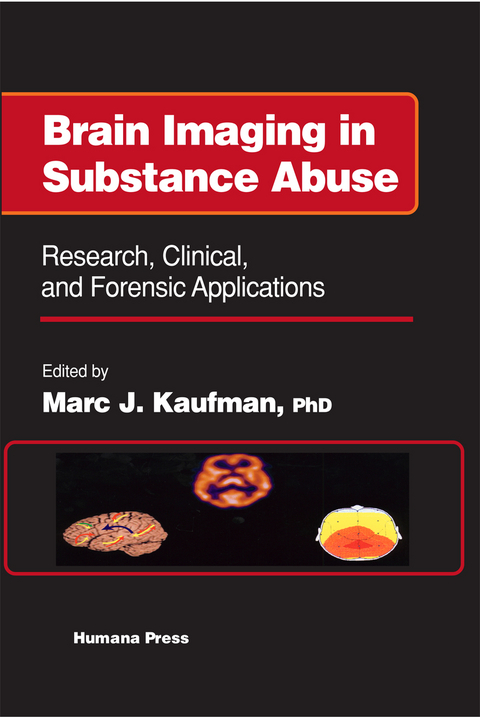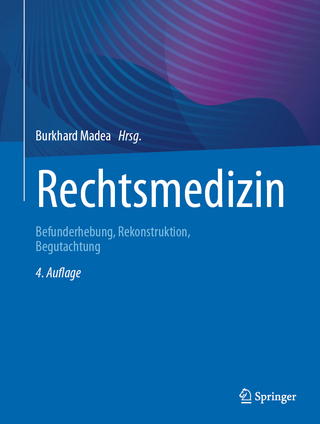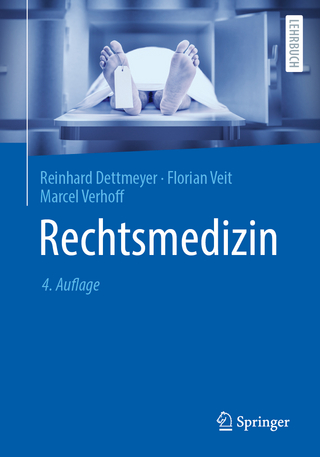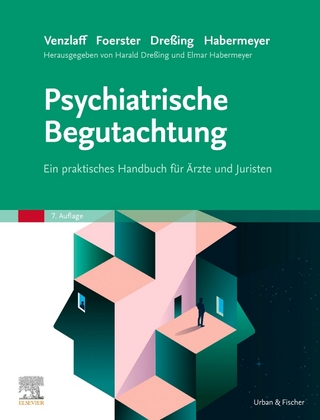
Brain Imaging in Substance Abuse
Humana Press Inc. (Verlag)
978-0-89603-770-0 (ISBN)
The last two decades have seen prodigious growth in the application of brain imaging methods to questions of substance abuse and addiction. Despite considerable advances in our understanding of the central effects of drugs provided by preclinical data, relatively little direct evidence was known of how substances of abuse affect the brain and other eNS processes in humans. Brain imaging techniques have allowed access to the human brain and enabled the asking of questions never before imagined. The positron emission tomography (PET) data ofVolkow and her colleagues in the late 1980s, showing the uptake and time course of cocaine's binding in the human brain, revealed for the first time the distinct sites of action of this drug. This work was extremely important because it showed clearly, through imaging a drug in the brain of a living human, that the time course of its action paralleled the behavioral state of "high. " This study marked a turning point in our understanding of drug-brain-behav ior interactions in humans. Many more investigations of drug effects on the structure and function of the human brain were soon to follow, leading to much better insights into brain systems. Brain imaging allowed for the direct assessment of structural and functional anatomy, biology, and chemistry in substance abusers.
1: Electroencephalography, Topographic Mapping, and Event-Related Potentials in Substance Abuse Research.- History of the Electroencephalogram.- Recording the Electroencephalogram.- Analysis of the EEG.- Topographic Mapping.- Artifact Avoidance.- Event-Related Potentials.- Utility of Event-Related Potentials in Substance Abuse Research.- Caveats in Interpreting Electrophysiologic Data in Substance Abuse Research.- Future Directions.- Acknowledgments.- References.- 2: Positron Emission Tomography and Single-Photon Emission Computed Tomography: Methods and Applications in Substance Abuse Research.- Principles Underlying Positron Emission Tomography and Single-Photon Emission Computed Tomography.- Basic Limitations of Positron Emission Tomography and Single-Photon Emission Computed Tomography.- Applications in Substance Abuse Research.- Conclusions.- References.- 3: Fundamentals of Magnetic Resonance.- General Principles.- Magnetic Resonance Spectroscopy.- Magnetic Resonance Imaging.- Functional Magnetic Resonance Imaging.- Other Magnetic Resonance Methods.- Summary.- Acknowledgments.- References.- 4: Electroenc ephalographic Studies of Substance Use and Abuse.- Electroencephalographic Studies of Chronic Substance Abusers.- Discussion.- Acknowledgments.- References.- 5: Emission Tomographic Studies in Substance Abuse.- Alcohol and Alcoholism.- Marijuana.- Hallucinogens.- Benzodiazepines.- Heroin and Opiates.- Cocaine.- Amphetamine and Methamphetamine.- Methylphenidate.- Solvents (“Thinners”) and Toluene.- Conclusions.- Acknowledgment.- References.- 6: Magnetic Resonance Findings in Substance Abuse.- Alcohol and Alcoholism.- Marijuana and Hallucinogens.- Benzodiazepines.- Heroin and Opiates.- Cocaine.- Amphetamine and Other Stimulants.- Solvent Abuse and OccupationalExposure.- Polydrug Abuse.- Concluding Remarks.- Acknowledgments.- References.- 7: Neu ropsychological Correlates of Drug Abuse.- Alcohol.- Marijuana.- Hallucinogens.- Benzodiazepines.- Opiates.- Cocaine.- Amphetamine and Other Stimulants.- Solvents.- Conclusion.- Acknowledgments.- References.- 8: Neuroimages as Legal Evidence.- Science and the Law.- Neuroimages as Psychiatric Evidence.- Substance Abuse, Neuroimaging, and Crime.- Conclusion.- References.- Bibliography of Research Studies in Substance Abuse.- to the Bibliography.- Bibliography Table of Contents.- EEG and Evoked Potentials.- Emission Tomography.- Magnetic Resonance.- Neuropsychology.
| Erscheint lt. Verlag | 29.9.2000 |
|---|---|
| Reihe/Serie | Forensic Science and Medicine |
| Zusatzinfo | XXV, 425 p. |
| Verlagsort | Totowa, NJ |
| Sprache | englisch |
| Maße | 178 x 254 mm |
| Themenwelt | Medizin / Pharmazie ► Medizinische Fachgebiete ► Radiologie / Bildgebende Verfahren |
| Medizin / Pharmazie ► Medizinische Fachgebiete ► Suchtkrankheiten | |
| Studium ► 2. Studienabschnitt (Klinik) ► Rechtsmedizin | |
| Sozialwissenschaften ► Soziologie | |
| ISBN-10 | 0-89603-770-3 / 0896037703 |
| ISBN-13 | 978-0-89603-770-0 / 9780896037700 |
| Zustand | Neuware |
| Haben Sie eine Frage zum Produkt? |
aus dem Bereich


